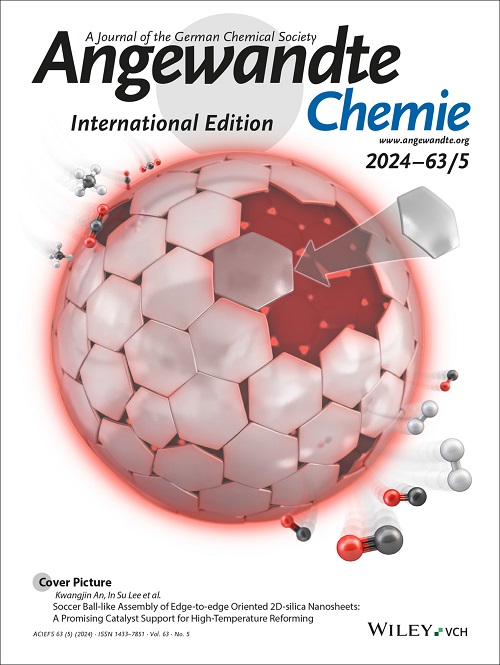Enhancing the Stability of Aqueous Membrane-Free Flow Batteries: Insights into Interphase Processes
IF 16.1
1区 化学
Q1 CHEMISTRY, MULTIDISCIPLINARY
引用次数: 0
Abstract
Membrane-free flow batteries using immiscible electrolytes aim to overcome limitations of conventional redox flow batteries by eliminating expensive ion-selective membranes. However, they face challenges including low power density due to the transport constraints in immiscible electrolytes, the need for high partitioned stable compatible active species, and the overlooked self-discharge interphase phenomena that reduces coulombic efficiency. We present a novel aqueous biphasic system based on two salts improving electrolyte ionic conductivity and viscosity. Potassium ferrocyanide (K4[Fe(CN)6]) and sulfonated viologen ((SPr2)V) species were examined computationally and experimentally demonstrating effective species separation in all oxidation states, achieving a tenfold higher concentration in their electrolyte. The mutual compatibility and stability of these species enabled unprecedented scanning electrochemical microscopy (SECM) analysis of the interphase revealing insights like species concentration gradients and crossover. The enhanced electrolyte properties expanded the open-circuit voltage to 1.1 V and improved mass transport, enabling power densities being 3.5 times higher than previous examples. The battery achieved 80.2% energy efficiency at C/2 rate and under flowing conditions it maintained stable performance over a month (400 cycles) at high states of charge. This work presents an innovative aqueous membrane-free flow battery that avoids parasitic reactions, enabling detailed interphase studies and advancing this technology.求助全文
约1分钟内获得全文
求助全文
来源期刊
CiteScore
26.60
自引率
6.60%
发文量
3549
审稿时长
1.5 months
期刊介绍:
Angewandte Chemie, a journal of the German Chemical Society (GDCh), maintains a leading position among scholarly journals in general chemistry with an impressive Impact Factor of 16.6 (2022 Journal Citation Reports, Clarivate, 2023). Published weekly in a reader-friendly format, it features new articles almost every day. Established in 1887, Angewandte Chemie is a prominent chemistry journal, offering a dynamic blend of Review-type articles, Highlights, Communications, and Research Articles on a weekly basis, making it unique in the field.

 求助内容:
求助内容: 应助结果提醒方式:
应助结果提醒方式:


